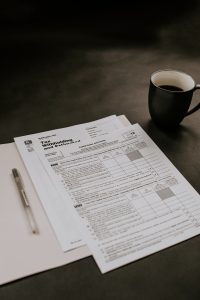Forex trading, also known as foreign exchange trading, is the process of buying and selling currencies in the global market. It is the largest and most liquid financial market in the world, with an average daily trading volume of over $5 trillion. One of the most important terms used in forex trading is the concept of “calling in” or “calling out.” In this article, we will explain what it means to call in forex and how it works.
What is calling in forex?
When a trader “calls in” a trade, they are essentially closing out their position by selling the currency they bought earlier. This means that they are taking their profits or cutting their losses, depending on the market conditions. Calling in a trade is also known as “closing out” or “liquidating” a position.
There are several reasons why a trader may decide to call in a trade. For example, they may have reached their profit target or their stop-loss level, or they may have identified a trend reversal in the market. Calling in a trade is a crucial part of forex trading, as it allows traders to manage their risk, lock in profits, and avoid losses.
How does calling in forex work?
To understand how calling in forex works, let’s look at an example. Suppose a trader buys 1000 euros at a rate of 1.2000 USD/EUR. This means that they have spent $1200 to buy 1000 euros. If the exchange rate rises to 1.2200 USD/EUR, the value of the trader’s position will increase to $1220. At this point, the trader may decide to call in their trade, which means they will sell their 1000 euros and receive $1220 in return.
On the other hand, if the exchange rate falls to 1.1800 USD/EUR, the value of the trader’s position will decrease to $1180. If the trader decides to call in their trade at this point, they will sell their 1000 euros and receive $1180 in return. In this case, the trader has incurred a loss of $20.
It is important to note that calling in a trade does not necessarily mean that the trader is closing their entire position. They may choose to call in only a portion of their position, leaving the rest open to capture further gains or losses.
When to call in a trade?
Knowing when to call in a trade is essential for successful forex trading. Traders should have a clear understanding of their trading strategy and set specific profit targets and stop-loss levels. They should also keep an eye on market trends and news events that may impact currency prices. Here are some common situations when traders may decide to call in a trade:
1. Profit target reached: When the price of a currency reaches the trader’s profit target, they may decide to call in their trade to lock in their profits.
2. Stop-loss level hit: When the price of a currency falls to the trader’s stop-loss level, they may decide to call in their trade to limit their losses.
3. Trend reversal identified: When a trend reversal is identified in the market, traders may decide to call in their trade to avoid further losses or capture potential gains.
4. Exiting a trade before a major news event: Traders may decide to call in their trade before a major news event, such as a central bank announcement or a political election, to avoid potential volatility and uncertainty in the market.
In conclusion, calling in forex is a crucial part of forex trading. It allows traders to manage their risk, lock in profits, and avoid losses. Traders should have a clear understanding of their trading strategy and set specific profit targets and stop-loss levels. They should also keep an eye on market trends and news events that may impact currency prices. By doing so, they can make informed decisions about when to call in a trade and optimize their trading results.





